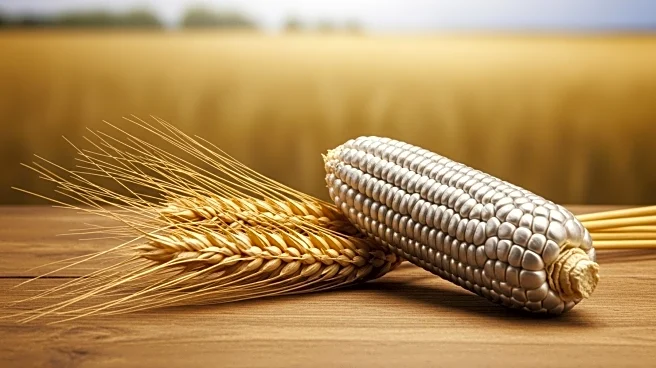What is the story about?
What's Happening?
The grain markets are experiencing mixed trade as December corn prices increased by 3 cents to $4.26¾ per bushel, while November soybeans rose by 1½ cents to $10.39 per bushel. Wheat prices, however, showed a slight decline, with December CBOT wheat down by 2¼ cents to $5.22 per bushel. The fluctuations in grain prices are attributed to new crop data and fund traders' reluctance to hold short positions, particularly in corn, due to concerns about the U.S. corn crop size. Additionally, livestock markets saw December live cattle prices rise by $1.20 to $235.35 per hundredweight, and October feeder cattle increased by 47 cents to $352.20 per hundredweight. Meanwhile, crude oil prices fell by 56 cents to $62.70 per barrel.
Why It's Important?
The mixed trade in grain markets highlights the ongoing volatility and uncertainty in agricultural commodities, which can impact farmers' income and the broader agricultural sector. The rise in corn and soybean prices may benefit producers, but the decline in wheat prices could pose challenges for wheat farmers. Livestock price increases suggest strong demand, which could benefit ranchers. However, the drop in crude oil prices may affect energy markets and related industries. These developments are crucial for stakeholders in agriculture and energy sectors, influencing pricing strategies and market forecasts.
What's Next?
Market participants will closely monitor upcoming crop data releases and fund traders' positions, which could further influence grain prices. The agricultural sector may need to adjust strategies based on crop yield forecasts and demand trends. Additionally, energy market stakeholders will watch crude oil price movements, potentially affecting future investment and production decisions.
AI Generated Content
Do you find this article useful?













